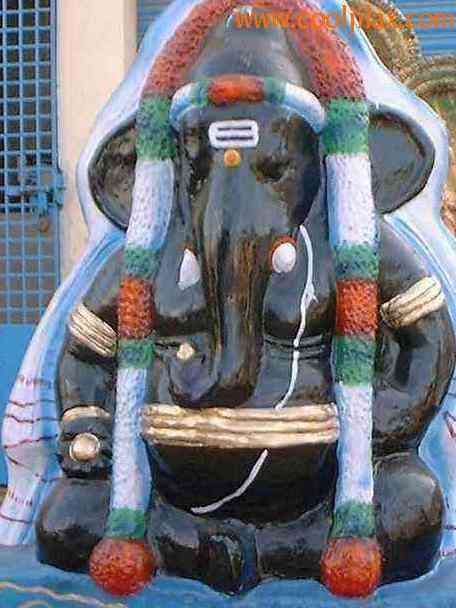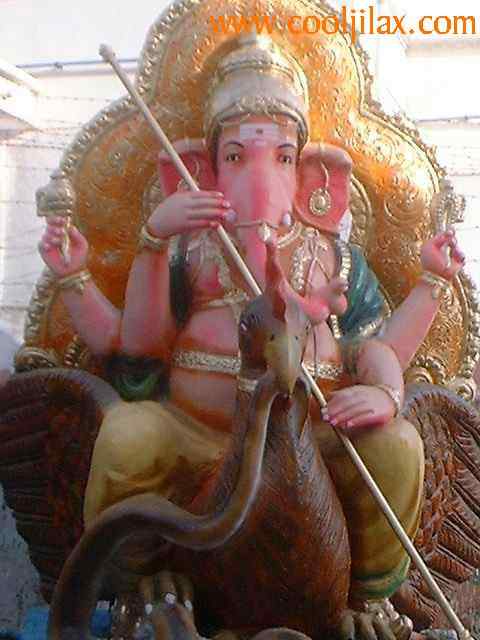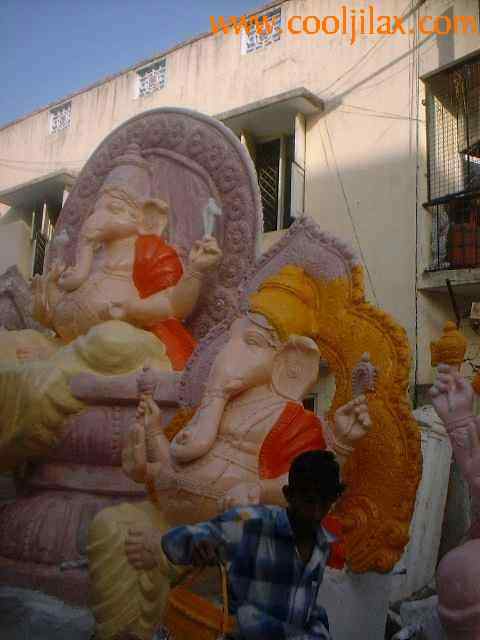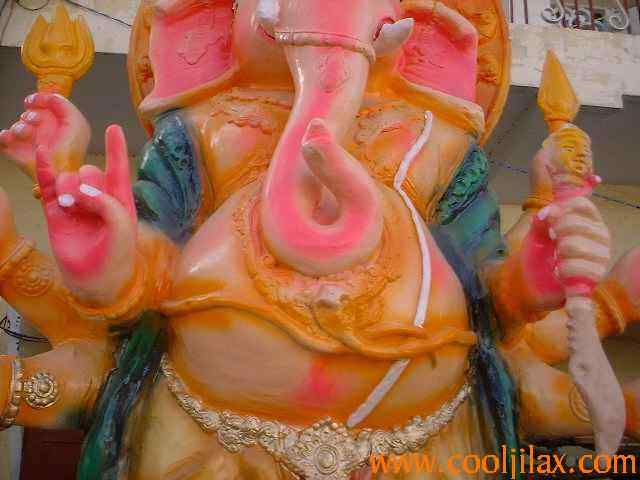History
This is an ancient rock cut temple. Scholars says that Lord Vinayaga is the Lord of wisdom, As Vinayagar satisfies the wishes of his devotees like Karpagam tree, he is also known "Karpaga Vinayagar". Here Lord Vinayaga appears with 2 hands unlike in other places where he is seen with 4 hands. Also he is seen seated without Angusapasam, with his legs folded and stomach not touching the Asanam in the form of "Artha Padma" Asanam. The word Vinayaga means "Incomparable Leader" Devotees worshipping Valamburi Vinayagar seated facing towards north, will be blessed with all wealth.
The deity of this temple is known as "Marudeeswarar" as Marudha tree (In Sansscrit Arjuna Virutcha, The Botanical name is Termanalia Arjuna) worship is followed in this temple which indicates that this temple in an ancient temple. The sculptur of pasupatheeswarar, "A cow worshipping Lord Siva by offering his milk" is the special feature of this temple. Also kubheran the Lord of wealth had worshipped at this temple.
Also adding to the sprituality Goddess Laxmi, Saraswathi and Durgai are found together at the same sport.
Unlike other places the three Lingams Thiruveesar, Marudheesar and Senchadeswarar and the three Goddess Sivagami amman, Vadamalar Mangaiamman and Soundara Nayaga amman all appear together at the same place and bless the devotees.
It is believed that by worshipping Kathyayini amman at this temple women get relived from sevvai dosham which prevent them from getting married. "Sabda Madhar" whom importance due to changing time are provided with a seperate sannidhi known as Sakthi sannidhi at this temple.
Antiquity: Over 15 inscriptions are found within the temple, that help establish the age of the temple. The Stalapuranam published by the temple classifies the growth of this temple into three distinct stages.
Location
Pillayarpatti is situated at a distance of 71Kms from Madurai and 12Kms from Karaikudi on Thirupathoor - Karaikudi state highway.The nearest airport is at Tiruchirappalli and Madurai. Chennai Rameswaram Express travel to these two railheads.
About the temple
Karpaga Vinayagar koil is one of the oldest Cave Temples (Rock Cut) temples of Tamilnadu and situated at Pillayarpatti, which is between Pudukkottai and Karaikkudi. The nearest airport is at Tiruchirappalli, Chennai. Rameswaram Express and Kamban Express travel to these two railheads. The town of Pillaiyarpatti is named after 'Pillayar' - the tamil name for Ganesha, and this ancient temple houses rock cut images of Shiva, Lingodbhavar and others as well as several other shrines. Steeped in the tradition of Agamic textsthe temple bears testimony to the vibrant temple culture of the Tamil people, passed down through centuries.
Antiquity: Over 15 inscriptions are found within the temple, that help establish the age of the temple. The Stalapuranam published by the temple classifies the growth of this temple into three distinct stages. The first stage goes back in time by about 1600 years. During this period, the innermost rock cut shrines housing Karpaka Vinayakar and Tiruveesar came into being. The uniqueness of the image of Ganesha is one factor testifying this date; the characters used in the temple inscriptions also help establish this date.
The pillars within the shrine are of pre-Pallava origin. The Pallavas were prolific builders of rock cut temples (Mahabalipuram, Mahendravadi, Mamandur, Mandakapattu, Seeyamangalam, Namakkal, Tiruchi, Nartamalai, Kudumiyanmalai, Tirukkokarnam, Tirumeyyam, Peraiyur, Malayadipatti, Tirukolakkudi, Kunrakkudi etc.). A number of these can be traced to Mahendravarman I (615 - 630 AD) and Narasimhavarman I (630 - 668 AD). However, the inscriptions at Pillayarpatti date further back to the 4th century AD. Also, given the location of the temple in the Pandya kingdom it would only be logical to associate Pandya patronage to this temple, especially in the light of Pandya patronage at the Kazhugumalai temple not too far from here. There are several inscriptions within this temple that date back to the period between 1091 AD and 1238 AD, making it apparent that the Pillayarpatti Nagarattar became the custodians of the temple during the 13th century AD during the second growth phase of this temple, when Vimanams and Rajagopurams were built.
The third phase of growth is much more recent and it involved the repair, rebuilding and refurbishment of the entire temple complex, including the renovation of the temple tank. The tank and the two Raja Gopurams provide an attractive approach to the temple, in this rather remote town of Pillayarpatti.
































No comments:
Post a Comment